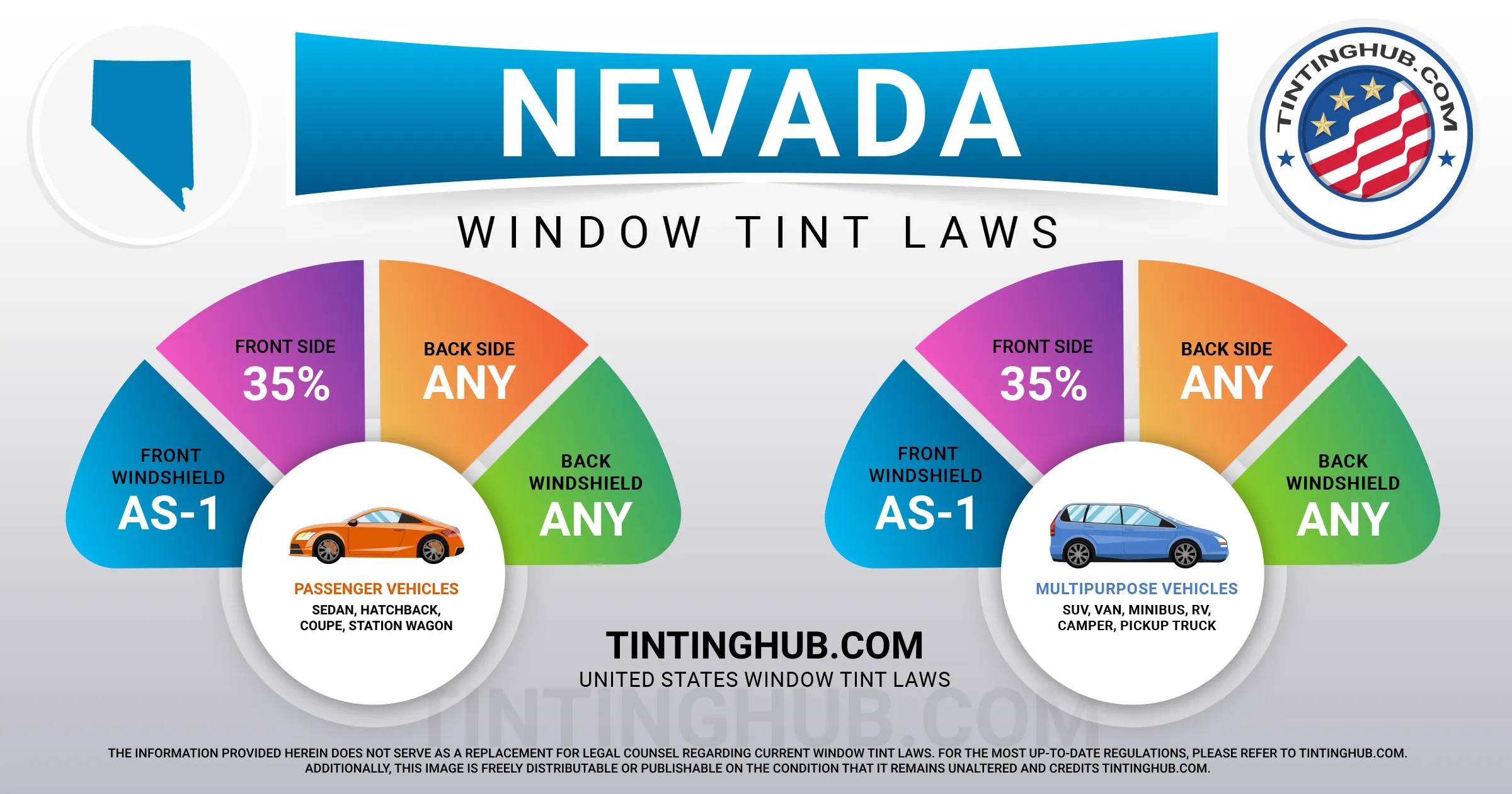Unlocking the Secrets of Car Window Tinting in Nevada
Car window tinting laws in Nevada have been in effect since 1993. As a conscientious driver, it’s essential to be aware of these regulations to ensure your vehicle complies with the law. In this article, we’ll provide you with comprehensive information on Nevada’s window tint laws, covering tint darkness, reflection, and other essential regulations that every motorist should know.

Understanding Tint Darkness in Nevada
The darkness of your car’s window tint is measured in terms of VLT, or Visible Light Transmission. Nevada’s regulations are quite specific, and they differ for sedans and SUVs/vans.
Tint Darkness for Sedans
Windshield: Non-reflective tint is allowed, but it must be above the manufacturer’s AS-1 line.
Front Side Windows: These windows must allow more than 35% of light to pass through.
Back Side Windows: You have more flexibility here, and any level of darkness can be used.
Rear Window: Similar to back side windows, any darkness is permitted.
Tint Darkness for SUVs and Vans
Windshield: The same rule applies – non-reflective tint is allowed above the manufacturer’s AS-1 line.
Front Side Windows: Like sedans, these windows must allow more than 35% of light to enter.
Back Side Windows: There are no specific restrictions on darkness for these windows.
Rear Window: As with back side windows, there are no specific regulations for darkness.
Shedding Light on Tint Reflection in Nevada
Window tint not only adds privacy but can also reduce glare and heat. Nevada’s tint laws also govern how much light your tint can reflect.
Tint Reflection for Sedans
Front Side Windows: The current law in Nevada does not reference the reflectivity of front side windows.
Back Side Windows: Similarly, there is no mention of reflectivity regulations for back side windows.
Tint Reflection for SUVs and Vans
Front Side Windows: As with sedans, there is no specific mention of reflectivity for front side windows on SUVs and vans.
Back Side Windows: The law does not provide any guidelines on reflectivity for back side windows.
Additional Regulations You Need to Know
In addition to darkness and reflection, there are other important regulations that Nevada enforces concerning window tinting. It’s crucial to be aware of these as well.
Side Mirrors Requirement: If you tint your rear window, you must have dual side mirrors.
Color Restrictions: Window tinting does not allow the colors red and amber.
Tint Variance: Nevada state laws allow a 7% tolerance in light transmission.
Certificates: Manufacturers of window tint film must certify their products for use in Nevada. Ensure that your dealer is using certified film.
Stickers: There’s no requirement for a sticker to identify legal tinting.
Medical Exceptions: Nevada does allow medical exemptions for special tint. Be sure to follow the proper procedures if you require an exemption.
Please note that your county or place of residence may interpret Nevada’s tinting laws and regulations differently. To ensure you’re fully compliant, we recommend double-checking this information with your local DMV or law enforcement authorities.
Our commitment is to provide accurate and up-to-date information. As of 2023, our knowledge of Nevada’s window tint laws remains current. However, if you come across any information that is not up to date or correct, please don’t hesitate to contact us so we can rectify it. Your safety and compliance with the law are our top priorities.
Count on us, the trusted industry leader, for accurate and reliable window tint law information. Drive legally, drive confidently.